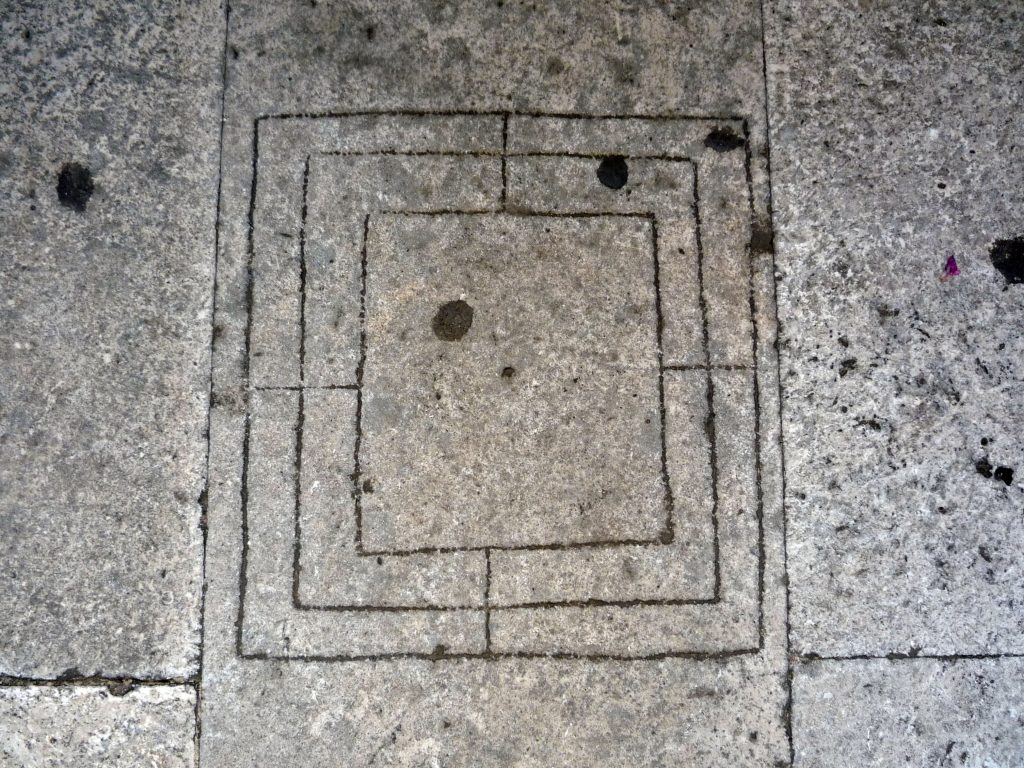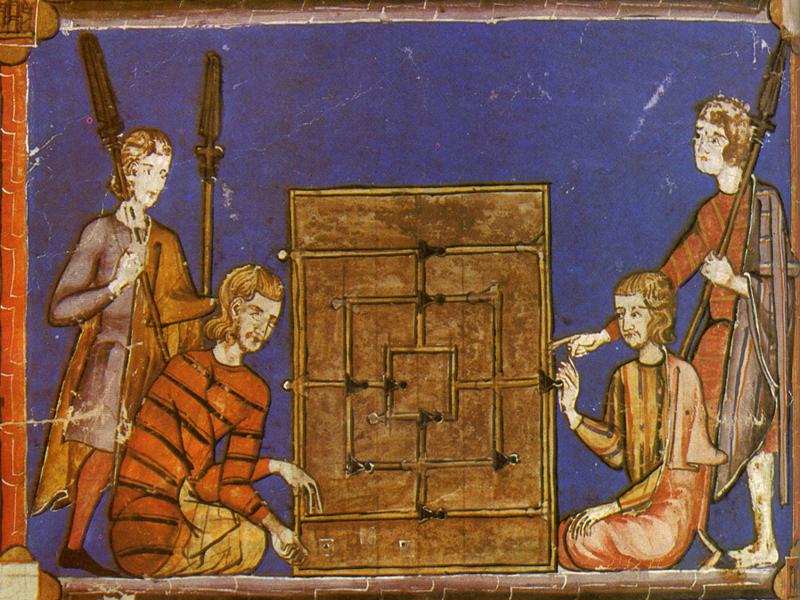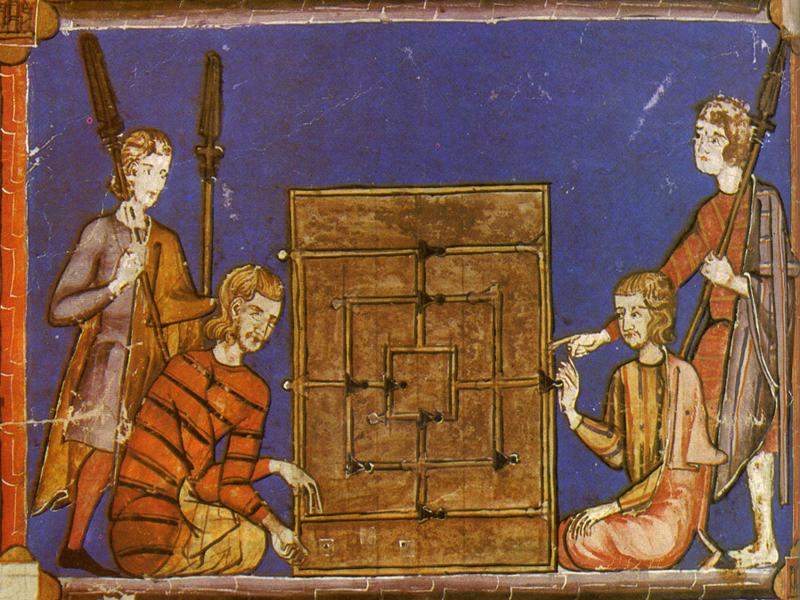Continuing our series Gaming and Gambling, we will walk you through how to play a two player strategy game dating back to at least the Roman Empire, that can be played with children as young as 5 and upward.
Nine Men’s Morris is a strategy game that also is known as nine-men morris, mill, merrills and nine penny marl. The game has also been called Cowboy checkers due to the fact that if the players have patch of dirt and nine rocks, the game can be played. Nine Men’s Morris is a solved game that is, a game whose optimal strategy has been calculated. It has been shown that with perfect play from both players, the game results in a draw.

The board consists of a grid with twenty-four intersections or points. Each player has nine pieces, or “men”, usually colored black and white, but red and blue are also popular colors. Players try to form ‘mills’—three of their own men lined horizontally or vertically—allowing a player to remove an opponent’s man from the game. A player wins by reducing the opponent to two pieces (where they could no longer form mills and thus be unable to win), or by leaving them without a legal move.


Nine Men’s Morris Rules:
- There are 2 players in the game.
- The board consists of a grid of 3 squares one inside the other, with lines connecting the 24 intersections on which pieces can be placed.
- Each player has 9 pieces, called “men” of a given color.
- Each player tries to form a “mill”, which is 3 of their pieces in one row connected by the line. To form a mill, the pieces can be placed either horizontally or vertically, but not at at a 90 degree angle, and they must be connected by lines.
- The game begins when all pieces are off the board.
- Players decide who goes first either by agreement or by lot, such as toss of a coin.
- There are 3 phases to the game:
- Phase 1: Placing the men onto the board
- The players take turns placing one piece at a time onto the board, onto the empty dots.
- During this phase each player tries to prevent the opponent from forming a mill. However, if a mill was formed anyway, then the player who formed a mill gets to remove one of the opponent’s pieces, of their choice, from the board. The piece removed has to be not in a mill itself. If all of the opponent’s pieces form a mill, then none of the opponent’s pieces can be removed.
- Players can form more than one mill in a single move by strategically placing their pieces. If they form more than one mill, then they get to remove as many of the opponent’s pieces, as the number of mills that they formed.
- The act of removing an opponent’s piece after forming a mill is called, “pounding”.
- Phase 2: Moving the men on the board
- Once all of the pieces have been placed onto the board, the players begin moving their pieces, in alternating moves, one dot at a time to try to form mills in the same fashion as in the first phase.
- In the second phase pieces can only move to an adjacent dot, and pieces cannot jump over each other or skip dots if more than one are available in a row.
- A player is allowed to move a piece out of a mill and then moving it back on the next move to form the mill again. If this happens it is considered as if they formed a new mill and they get to remove one of the opponent’s pieces.
- Optional Phase 3: Flying the men across the board
- When one of the players has been reduced down to 3 last pieces, phase 2 ends and phase 3 begins.
- In phase 3, the limitation of moving only to an adjacent dot is removed, and both players can move their pieces to any available dot, even if that requires skipping dots or jumping over other pieces. Such movement is called “flying”.
- Phase 3 is optional and is considered a variation of the game to give an advantage to the losing opponent once they only have one piece left. If the players agree not to play phase 3 then they continue playing phase 2 until the end of the game.
- Phase 1: Placing the men onto the board
- The game ends when one of the players is reduced to two pieces, and cannot any longer form mills, or if a player has no legal moves to make, making their opponent the winner in either situation. (Source)
On Strategy:
- Nine Men’s Morris is a game of pure strategy without any luck component, since there is no dice of any kind.
- In the first phase it is more important to place pieces in strategic locations than trying to immediately form mills.
- It is better to disperse one’s pieces across the board than concentrating them in one location.
- An ideal position is when a player can shuttle a single piece between two mills, thus removing an opponent’s piece on every single move.

Nine Men’s Morris is a very popular game among the Trayn’d Bandes and you will often find a person in camp willing to play a game with you. Start practicing your strategy now. Happy Gaming!
Bibliography:
- Berger, Friedrich. “From circle and square to the image of the world: a possible interpretation for some petroglyphs of merels boards.” Rock Art Research 21, no. 1 (2004): 11-26.
- Uberti, Marisa. The Merels Board Enigma. With the worldwide census. Marisa Uberti, 2012.
- Bell, R. C. Board and Table Games from Many Civilizations. Courier Corporation, 2012.
- Botermans, Jack. The book of games: strategy, tactics & history. Sterling Publishing Company, 2008.



